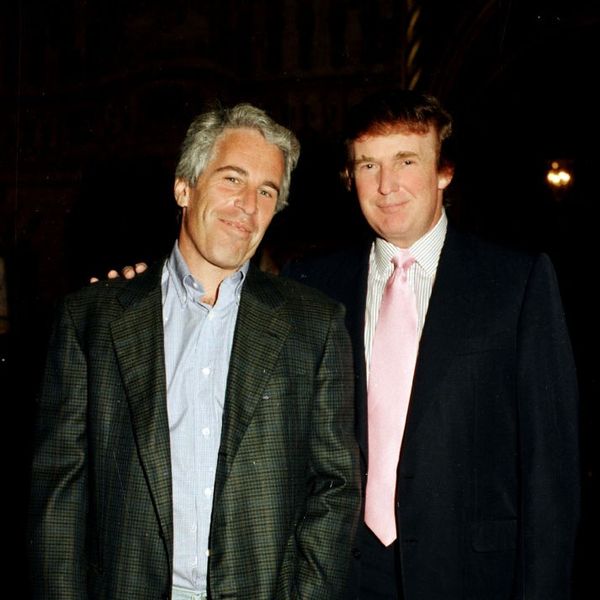
A child wears a face mask in Central Kalimantan, Indonesia due to ait pollution from peat fires. (Photo: CIFOR/Flickr/cc)
Billions of People Could Live Years Longer If Policymakers Reduce Air Pollution: Study
In the northern part of India, where nearly 250 million people live, the average person could live eight years longer if air pollution was reduced.
A new study released Wednesday by researchers at the University of Chicago showed that air pollution is cutting short the average global citizen's life by more than two years, with people in parts of the world dying as many as eight years earlier than they would without exposure to pollution.
"The combustion of the same fossil fuels that releases life-threatening air pollution also involves the release of greenhouse gases that increase the odds of disruptive climate change."
--AQLI
\u201cThis is very worrying data. We need to move quicker on greening our cities to decrease air pollution and save lives. Air pollution has a bigger impact on life expectancy than smoking \u2026 https://t.co/H1oUZZMrrU\u201d— Dr. Kwame McKenzie (@Dr. Kwame McKenzie) 1630498587
The health discourse in Sub-Saharan Africa has centered on infectious diseases such as HIV/AIDS and malaria. About 10% of health expenditures in the region go towards combating HIV/AIDS or malaria. However, a comparison shows that particulate pollution's impact on life expectancy is no less serious. In Nigeria, air pollution is second only to HIV/AIDS in terms of its impact on life expectancy--shaving off more years than malaria and water and sanitation concerns. In the Democratic Republic of Congo, it is second only to malaria. In Ghana, it ranks as the deadliest of these threats, while in Cote d'Ivoire it shortens life by about the same amount as those communicable diseases.
An Urgent Message From Our Co-Founder
Dear Common Dreams reader, The U.S. is on a fast track to authoritarianism like nothing I've ever seen. Meanwhile, corporate news outlets are utterly capitulating to Trump, twisting their coverage to avoid drawing his ire while lining up to stuff cash in his pockets. That's why I believe that Common Dreams is doing the best and most consequential reporting that we've ever done. Our small but mighty team is a progressive reporting powerhouse, covering the news every day that the corporate media never will. Our mission has always been simple: To inform. To inspire. And to ignite change for the common good. Now here's the key piece that I want all our readers to understand: None of this would be possible without your financial support. That's not just some fundraising cliche. It's the absolute and literal truth. We don't accept corporate advertising and never will. We don't have a paywall because we don't think people should be blocked from critical news based on their ability to pay. Everything we do is funded by the donations of readers like you. Will you donate now to help power the nonprofit, independent reporting of Common Dreams? Thank you for being a vital member of our community. Together, we can keep independent journalism alive when it’s needed most. - Craig Brown, Co-founder |
A new study released Wednesday by researchers at the University of Chicago showed that air pollution is cutting short the average global citizen's life by more than two years, with people in parts of the world dying as many as eight years earlier than they would without exposure to pollution.
"The combustion of the same fossil fuels that releases life-threatening air pollution also involves the release of greenhouse gases that increase the odds of disruptive climate change."
--AQLI
\u201cThis is very worrying data. We need to move quicker on greening our cities to decrease air pollution and save lives. Air pollution has a bigger impact on life expectancy than smoking \u2026 https://t.co/H1oUZZMrrU\u201d— Dr. Kwame McKenzie (@Dr. Kwame McKenzie) 1630498587
The health discourse in Sub-Saharan Africa has centered on infectious diseases such as HIV/AIDS and malaria. About 10% of health expenditures in the region go towards combating HIV/AIDS or malaria. However, a comparison shows that particulate pollution's impact on life expectancy is no less serious. In Nigeria, air pollution is second only to HIV/AIDS in terms of its impact on life expectancy--shaving off more years than malaria and water and sanitation concerns. In the Democratic Republic of Congo, it is second only to malaria. In Ghana, it ranks as the deadliest of these threats, while in Cote d'Ivoire it shortens life by about the same amount as those communicable diseases.
A new study released Wednesday by researchers at the University of Chicago showed that air pollution is cutting short the average global citizen's life by more than two years, with people in parts of the world dying as many as eight years earlier than they would without exposure to pollution.
"The combustion of the same fossil fuels that releases life-threatening air pollution also involves the release of greenhouse gases that increase the odds of disruptive climate change."
--AQLI
\u201cThis is very worrying data. We need to move quicker on greening our cities to decrease air pollution and save lives. Air pollution has a bigger impact on life expectancy than smoking \u2026 https://t.co/H1oUZZMrrU\u201d— Dr. Kwame McKenzie (@Dr. Kwame McKenzie) 1630498587
The health discourse in Sub-Saharan Africa has centered on infectious diseases such as HIV/AIDS and malaria. About 10% of health expenditures in the region go towards combating HIV/AIDS or malaria. However, a comparison shows that particulate pollution's impact on life expectancy is no less serious. In Nigeria, air pollution is second only to HIV/AIDS in terms of its impact on life expectancy--shaving off more years than malaria and water and sanitation concerns. In the Democratic Republic of Congo, it is second only to malaria. In Ghana, it ranks as the deadliest of these threats, while in Cote d'Ivoire it shortens life by about the same amount as those communicable diseases.

